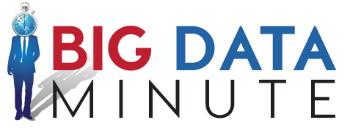
by Stephanie Rabinowotz | Aug 31, 2015 | Health Care
The state of North Carolina has 2 million medicaid patients and pays out $12 billion in Medicaid each year. Due to these high numbers, in 2010 governor Beverly Purdue announced a program to analyze medicaid claims. To do this, IBM was asked to step in to aid with healthcare analytics tools.
Since using the IBM Healthcare analytics there has been a 90% reduction in medicaid fraud. This software allows healthcare providers to see the patterns in medicaid claims and identify faulty claims against true claims. The great part about the use of Big Data analytics is that the IBM software can take the data collected from medicaid claims and put it into a visual format that is easy to understand. This allows for doctors and nurses to identify the fraudulent claims rather that rely on data scientists.
The use of big data analytics in the healthcare system not only aids in picking out the patterns that discover fraud, but it is also showing the population that there are people watching them and that they will be caught.
Thanks to Big Data analytics the state of North Carolina has decreased the rate of medicaid fraud and continues to search for those who dare to commit it.

by Stephanie Rabinowotz | Aug 27, 2015 | Business Optimization
If someone handed you a shovel and asked you to dig a hole, who would get credit for the hole? Did the shovel create the hole? No, you did, the shovel was a tool that allowed you to dig the hole more efficiently.
This is what Big Data is to businesses.
Many people believe that big data is the key to making money, and it is….just not necessarily in the way you may think. Instead of starting up your own Big Data company to make the big bucks, try using Big data instead. Companies who use Big Data to make more informed decisions are the ones who succeed, companies who produce Big Data software are the ones who get passed up by the newest model.
Don’t be a tool, be the person who uses the tool.
Back to the shovel analogy, your job is to dig a hole and though the shovel seems like your best friend in that moment, what if someone handed you an excavator? Now you can dig holes three times the size, all while sitting down! Even though the shovel seemed better than digging with your hands, the excavator now does the work for you. Businesses are the brains and Big Data is the tool, as long as the brains know what they are doing, the tool aids them wonderfully.
This is where the trouble comes in, even if you have a fancy complex program that does all the work, it still isn’t saving the business money if they don’t know how to run it. Many Big Data applications have made their money by providing a product that then requires a hired team of experts to manage it.
The way to make money in Big Data is to produce an application that is simple enough for the average business’s IT team to handle. The way to save money is to implement these applications into your business to gain much needed insight that allows the company to be more efficient and make smarter decisions.
The successful businesses are the ones who have figured out how to use Big Data to set themselves apart, rather than let it steal the spotlight.
Let us know what you think, is Big Data just a tool or are Big Data companies worthy of a higher name?

by Tara Buck | Aug 26, 2015 | Big Data, Project Management, Save With Data
Many organizations today struggle to get their cards in order and turn data into dollars.
“The more data you have, the more crucial it is to better manage your master data and improve the maturity of your master data management (MDM) program,” said Saul Judah, research director at Gartner. “Existing approaches to data management are, in many cases, insufficient to accommodate big data sources on an enterprise scale. Collecting data without managing it properly also creates ongoing costs as well as regulatory and compliance risks.”
In order to save money, CIOs and Chief Data Officers who oversee big data initiatives need to consider the following steps:
Update Information Strategy and Architecture
Many organizations have had success leveraging big data insight around specific business operations, but typically it’s limited to a single business unit or use case. Few firms have explored how to make big data insights actionable across the entire organization, by linking big data sources with trusted master data.
For example, many marketing organizations use data from social sources — such as Twitter and Facebook — to inform their campaigns, but they don’t reconcile this with trusted data in customer/prospect repositories that are used by customer services or sales. This can lead to incoherent customer communication that can actually undermine the sales or customer service process.
Become More Agile
Effective use of big data requires a mixture of old and new technologies and practices. This necessitates an agile approach that applies a bimodal IT framework to information governance (see “Why Digital Business Needs Bimodal IT”). MDM traditionally uses a Mode 1 approach which is policy-driven and approval-based. Big data typically uses a Mode 2 approach with little or no predefined processes or controls. Tactical and exploratory initiatives are much better suited to the “faster” Mode 2.
Move to Limit Risk Exposure
When an organization executes actions based on information sources outside the curation of MDM — as is the case in many big data implementations — exposure to certain types of business risk increases. Factors such as poor data quality, loss of critical information, and access to unauthorized information become more likely. Gartner recommends appointing a lead information steward role in relevant business units to assist in creating and executing risk controls with regards to data use in business operations.
All of the above steps to help manage your data can quickly turn around and save or make your firm money. You have the data- now just unlock the value of it with master data management.

by Rich Benvin | Aug 26, 2015 | Big Data, Case Studies, Creating Competitive Advantage
Many companies come up with a great ideas that they know will help a particular industry, but then struggle to formulate a plan to access and acquire customers in the new market. Cliintel is comprised of experts with diverse expertise in a wide variety of fields that can be quickly leveraged by our clients to ensure their successful entry into new markets and industries.
The Client:
A leading innovator in the Radio Frequency Identification (RFID) business had been working with a diverse client base that ranged from aerospace to the medical industry. They had recently identified the retail vertical as a potential new market for their products.
The Business Issue:
The primary use of RFID technology is for inventory tracking. The client wanted to broaden their reach by using their software solution to solve issues within the retail space. They had built a solution to track the relationships of products within a store location, providing real-time data on customer behavior and interaction with the products. The problem was trying to identify a client who would be willing to “beta-test” to validate the benefits from the solution and provide references.
Cliintel’s research enabled the client to complete product development ahead of schedule and successfully enter the retail market by successfully implementing their solution in record time while simultaneously acquiring new, referenceable customers.
The Approach:
Cliintel took a broad view of the retail industry, looking for beta-test candidates with needs that aligned with the primary uses of the RFID technology and who would realize value from the innovation. The industry was examined collectively and objectively to identify specific candidates who prioritized relationship marketing performance metrics, had large supply-chains and were targeting both internal and external loss-preventions programs.
Cliintel’s research enabled the client to complete product development ahead of schedule and successfully enter the retail market by successfully implementing their solution in record time while simultaneously acquiring new, referenceable customers.
The Solution:
Cliintel presented three key retail venues that they felt would benefit most from the client’s solution. Specific requirements for the solution were identified for each venue – ranging from pure inventory tracking to relationship marketing. After quickly conducting extensive market research, Cliintel identified specific companies that needed an inventory solution and possessed the willingness to participate in the beta-test.
The Project Results:
Cliintel’s research enabled the client to complete product development ahead of schedule and successfully enter the retail market by successfully implementing their solution in record time while simultaneously acquiring new, referenceable customers.
We’re proud to help our clients solve tough problems and achieve stunning results. To see what kind of big data results Cliintel.com can deliver for you, please Call 720-200-3001.

by Stephanie Rabinowotz | Aug 25, 2015 | Business Optimization
Often times when the next big thing hits the market, people jump into it without careful consideration. Don’t be the company that dumps all your money on Big Data without first knowing how to use it. These three steps describe how to use Big Data smartly, allowing it to make you money.
Test and Learn
- Make sure your IT team includes someone who’s responsible for testing your Big Data Model. Use the Test and Learn strategy to conduct quick, cheap tests frequently. This will enable you to expose variability, uncover needs and ultimately improve overall performance with fast insights.
Manage Data Processing Wisely
- Those who have been successful in the Big Data industry are the ones who are most clever about how their data is processes Knowing how to ask the right questions allows data models to process and store the data more efficiently. When possible apply low cost methods to first, using cheap IT tools to fun queries.
Use New Data Types
- Integrating new types of relevant data allows for more dynamic information. Companies who rely only on internal data collected will outperformed by companies who include other factors such as weather or traffic. The more relevant data collected, the better the information which allows us to analyze and make decisions more accurately.
Interested in how these methods save companies money? Learn More!











Recent Comments